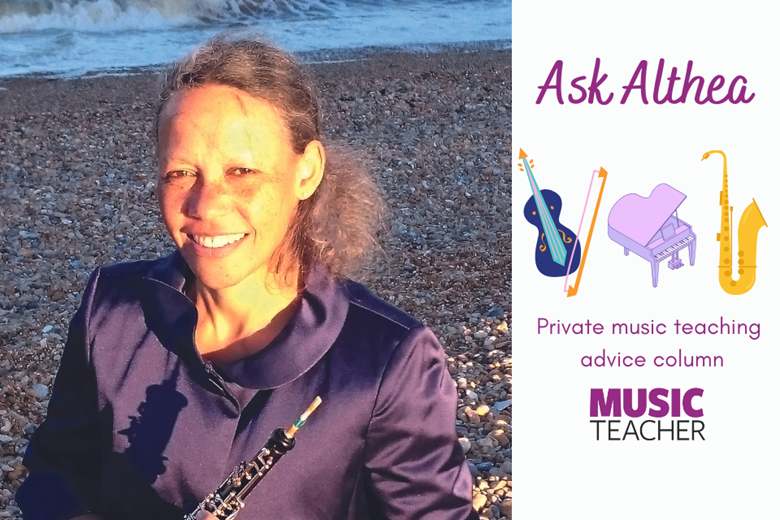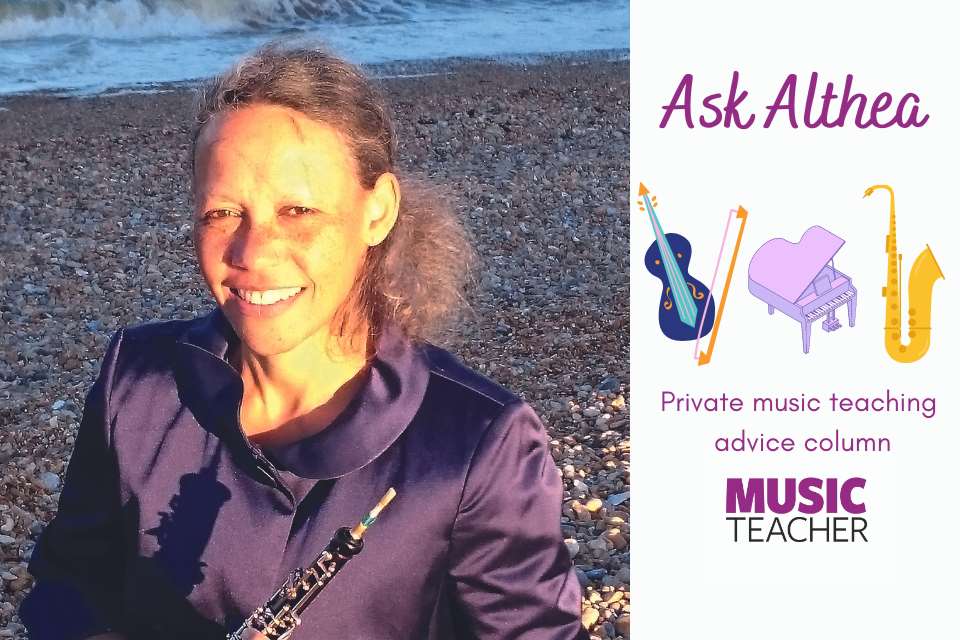Ask Althea: Private music teacher advice column (no.6)
Althea Talbot-Howard
Friday, July 1, 2022
In the first of a two-part series, Althea Talbot-Howard shares insight into how teachers might encourage students to compose for their Trinity College London exams.

Greetings!
Have you ever thought about encouraging a pupil to compose a piece for a Trinity graded exam?
I first heard about this innovation fairly soon after it was introduced. A violinist colleague and I were chatting on our way home from a gig – somewhere, sometime, during the noughties. I was astonished that such a thing was possible. My exam boards of choice were ABRSM and Guildhall, so I was unfamiliar with Trinity College London's change of direction in this area.
Her perspective was: ‘You should consider it! Because so few children do it that the examiners are completely amazed, and automatically give high marks.’ My response was along the lines of, ‘Wow, that's good!’ Leaving aside this questionable allegation, however, I was privately rather daunted by the whole idea. I lacked her confidence to guide pupils through the composition process. Flash forward 20 years or so, and I find myself working as a composer. I suspect that early seeds of my career change were sown during that chat.
A quick aside to younger teachers: you are possibly wondering what the fuss is about here. For the last two decades or thereabouts, composition has formed a compulsory part of the GSCE and A Level syllabuses. It wasn't always like this, though. Older musicians, such as myself, were often trained exclusively in performance and theory. Composition was simply something that people had done in the past – or were doing in the present, perhaps while holding down a university position. It wasn't something that was generally taught at school, or in private instrumental lessons.
Some years later, a promising young beginner pianist entered my private teaching studio. As we started to prepare for the Trinity Initial exam, she turned up, one Saturday, with an embryonic piece in her music bag. I was amazed and thrilled, and quickly told her that we could use it in her exam, which delighted her.
I suspect that I gave her a little more compositional guidance than the syllabus suggests. My position was that it was a wonderful opportunity to drive forward progress, powered by her enthusiasm, but that she needed help to structure the piece correctly and to see that her harmonic choices worked well. I remember that basic four-bar phrasing needed to be established. After all, if a child composes something that is musically or structurally weak, how is one being effective as a teacher if one simply ignores deficiencies by saying nothing about them? So, it was an interactive process, but led by her creative impulses.
What guidance do the general parameters offer? Here is a precis:
- Candidates can choose to perform an own composition as one of their pieces. Marks are not awarded for the quality of the composition.
- Own compositions should be candidates' own unaided work, although teachers may offer guidance as necessary.
- A typeset or handwritten copy of the composition must be given to the examiner at the beginning of the exam and marks will be deducted if notation is incomplete or inaccurate, or if the performance varies significantly from the notation.
- In addition to these general parameters, the syllabus also suggests areas of focus for each grade. One can find this text either in the grade list itself, or in the introductory pages, depending upon the instrument.
Why is this exercise worth doing?
Not only did my pupil's enthusiasm for the project drive her to progress even faster as a pianist, but she also developed theoretically. We chose conventional notation for her score, meaning that we covered the basics of Grade 1 Theory in a fun and impactful way. The common time symbol; the stave; how to draw tidy noteheads, straight barlines and accurate clefs all were worked upon, week after week. Joyfully notating one's own piece has a great deal to recommend it as a practical approach to the study of theory. In fact, the exercise was worth it for that alone.
It was so valuable, in fact, that my second column on this topic will feature some compositional strategies to help you to move some of your Initial-level piano, violin or recorder pupils onto this path. Although the Music Teachers' Board also permits the submission of an original composition as a free-choice piece, my focus will remain on Trinity exams and heritage ABRSM Theory materials featuring composition, which will assist you in this task. If this is not something you have done before, I hope that you will soon feel equipped to explore it!
With all good wishes until next time.
Althea
Readers can contact Althea via the editor.


